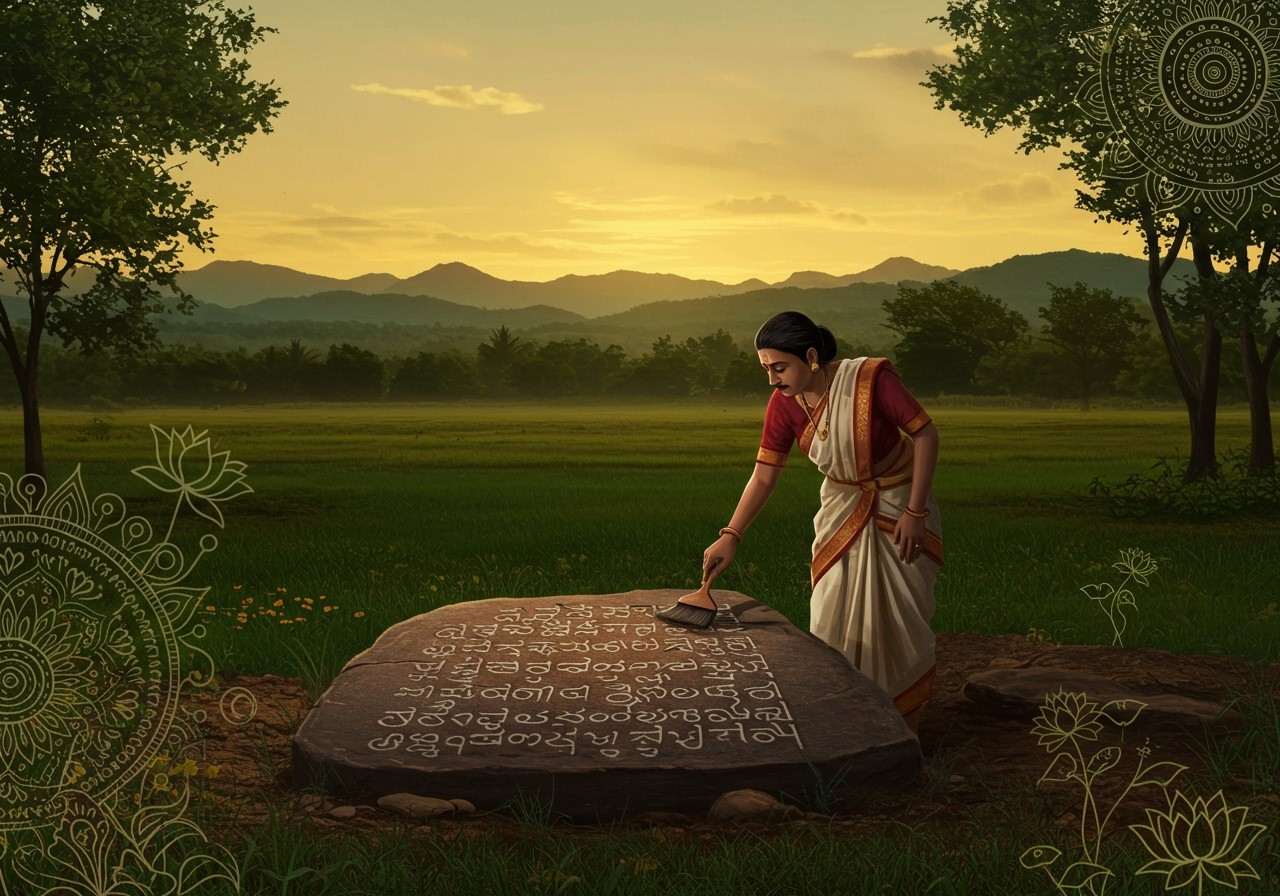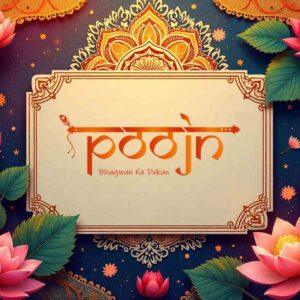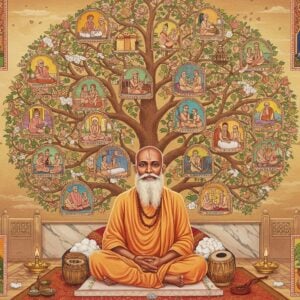

Hum sab apni Bhasha, apni sanskriti se kitna jude hue hain, hai na? Imagine कीजिए, a time almost 1500 years ago, when our ancestors in Karnataka carved their words onto a stone, leaving a message for all of us to see. This isn’t just a story; it’s the reality of the Halmidi Inscription, a treasure that takes us back to the very beginnings of the Kannada language as we know it.
This ancient stone record is more than just an old artifact; it’s a piece of our collective soul. It’s the first complete love letter written in Kannada, showing us that our language has a rich, deep, and powerful history. For anyone who feels a sense of pride in our diverse Indian heritage, the story of this inscription is truly heartwarming.
The Moment of Discovery: A Window to Our Past
It was in the year 1936, in a quiet village called Halmidi in Karnataka’s Hassan district, that this incredible link to our past was found. Dr. M. H. Krishna, a name we must remember with respect, unearthed this pillar. It was a moment of sheer discovery, like finding an old family album you never knew existed. This inscription belongs to the time of the Kadamba Dynasty, a period when Kannada was blossoming from a regional dialect into a language of administration and poetry.
Understanding this historical context helps us appreciate the inscription even more. It wasn’t just a random carving; it was a formal announcement, showing that Kannada had earned its place in the royal courts and official records.
What Makes the Halmidi Record So Special?
A Glimpse into Early Kannada Script
The Halmidi inscription, dated to around 450 CE, is widely regarded as the earliest known full-length inscription in the Kannada language. The script is a beautiful, early form of Kannada that evolved from the ancient Brahmi script, through the Kadamba script. It has unique characteristics that show the language in its formative years, a stepping stone to the elegant script we use today.
More Than Just Words on Stone
This inscription isn’t a poem or a story, but a record of a land grant. This tells us something profound: by the 5th century, Kannada was the language of governance. It was used for important, official business. This shows the sophistication and organisation of our ancestors. They weren’t just warriors and farmers; they were building a society with laws, records, and a shared linguistic identity.
Acknowledging Even Older Footprints
While the Halmidi inscription is the oldest complete record, it’s fascinating to know that whispers of Kannada existed even earlier. For instance, the Lion balustrade inscription found at Talagunda is believed to be from around 370 AD and contains Kannada words. These earlier traces are like the first few drops of rain before a monsoon, hinting at the great linguistic tradition that was to follow. The Halmidi record, however, remains the first full shower, a complete text that gives us a clear picture.
Connecting with Your Heritage in Today’s World
The Halmidi inscription is a powerful reminder of the importance of preserving our roots. In our busy modern lives, it’s easy to lose touch with the traditions that have shaped us. At poojn.in, we believe that connecting with our heritage is a way of connecting with ourselves.
Just as this inscription preserves our history in stone, we help you preserve our living traditions in your homes. To create a sacred space that resonates with our ancient culture, you need authentic items. Explore our carefully curated collection of Pooja Samagri, where every item is sourced with purity and respect in mind.
Answering Your Curiosities About This Ancient Marvel
Many of us have questions about such historical treasures. You might be wondering, what exactly is the Halmidi inscription? Think of it as the oldest official document from our Kannada-speaking ancestors, a formal record from around 450 CE. Its importance is immense because it provides solid proof of the early, sophisticated use of the Kannada language and script, helping scholars trace its beautiful evolution from ancient Brahmi.
The inscription itself talks about a land grant, giving us precious details about the social and political life of that era. And for those who are curious about the script, it was the brilliant work of scholars and archaeologists like Dr. M. H. Krishna that allowed us to read these ancient words and understand their message. This single stone has become a cornerstone for modern studies of the Kannada language’s history.
To further deepen your understanding of our rich past, you might find solace and knowledge in our collection of sacred texts and holy books. They carry the wisdom of generations, much like the Halmidi stone carries the words of our ancestors.
A Legacy Carved in Stone
The Halmidi Inscription is more than a historical artifact; it is a symbol of pride, a testament to the timelessness of the Kannada language and the rich cultural tapestry of Karnataka. It connects us to our past and inspires us to carry our legacy forward.
Let’s cherish these links to our heritage, for they are the threads that weave the story of who we are. By understanding our past, we enrich our present and build a more culturally aware future for our children.
At poojn.in, we are honored to be a part of your spiritual and cultural journey. We provide the items you need to keep these traditions alive, with the convenience you deserve.


